For those who lived under a stone the last 40 years, Pixar is an American company specialising in making animated films using computer animation. The company was founded by Lucasfilm (George Lucas) as part of special effects company Industrial Light & Magic, but made big by Steve Jobs and John Lasseter. It is known for films such as Toy Story (1995) and Finding Nemo (2003). The successful films have earned Pixar 22 Academy Awards and a Golden Lion at the Venice Film Festival 2006 for all its films combined. Since 2006, Pixar has been part of a former partner, The Walt Disney Company.

American postcard by Disney Enterprises / Pixar Animation Studios, 2005. Image: Pixar Animation Studios. Art by Ricky Nierva. From 'The Art of Pixar: 100 Collectible Postcards, published by Chronicle Books.
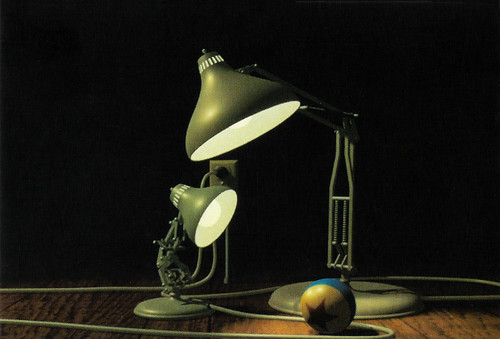
American postcard by Disney Enterprises / Pixar Animation Studios, 2005. Image: Pixar Animation Studios. Film image of Luxo Jr. (John Lasseter, 1986). From 'The Art of Pixar: 100 Collectible Postcards, published by Chronicle Books.

French postcard by Sonis, no. C. 620. Image: Pixar / Disney / Hasbro / Mattel / James Industries. Film poster for Toy Story (John Lasseter, 1995).
The start of the Motion Doctors
Pixar was founded in 1979 as the Graphics Group, a division of Lucasfilm's computer division. The formation began with the hiring of Dr. Ed Catmull from the New York Institute of Technology (NYIT), where he was the head of the Computer Graphics Lab (CGL). At NYIT, they worked on many computer animation techniques that are considered standard today.
At Lucasfilm, the team worked on the predecessor of RenderMan, called Motion Doctor. This allowed animators who were still used to traditional animation to use computer animation with minimal training. The team began working on films for Lucasfilm or collaborating with Industrial Light and Magic on special effects. Much research was done into the possibilities of computer animation.
Some major breakthroughs were the effects in Star Trek II: The Wrath of Khan (Nicholas Meyer, 1982) and Young Sherlock Holmes (Barry Levinson, 1985). In 1984, the team was expanded to include John Lasseter, who had recently left Disney. That same year, Graphics Group made its first computer-animated feature: The Adventures of André and Wally B. (Alvy Ray Smith, 1984).
In 1985, Steve Jobs left Apple Computer, and in 1986 he acquired the Graphics Group from Lucasfilm, paying $5 million to George Lucas, and investing another $5 million in the company itself. A key driver behind Lucas' decision to sell the Graphics Group was his lack of income after his divorce, and the failure of his film Howard the Duck (Willard Huyck, 1986).
From now on, the Graphics Group continued under the name Pixar. The new, independent company was led by Dr. Edwin Catmull, President, and Dr. Alvy Ray Smith, Executive Vice President, and Director. Jobs served as chairman of Pixar. Initially, Pixar focused on selling computer hardware, with its primary effort being the Pixar Image Computer. This system was sold primarily to government offices and hospitals.
One of Pixar's primary customers was Disney Studios. However, the computer did not sell too well, and disappointing sales figures threatened to prove fatal to Pixar, and the company was forced to abandon the computer. In an attempt to boost sales, Pixar employee John Lasseter made the short film Luxo Jr. (Luxo Jr., 1985). He showed it at the SIGGRAPH computer fair as a demonstration of what the Pixar Image Computer was capable of. Lasseter also began making commercials. Although it did not increase sales of the computer, these films did demonstrate Pixar's capabilities in the field of computer animation.

American postcard by Disney Enterprises / Pixar Animation Studios, 2005. Image: Pixar Animation Studios. Film image for The Adventures of André and Wally B. (Alvy Ray Smith, 1984). From 'The Art of Pixar: 100 Collectible Postcards, published by Chronicle Books.

American postcard by Disney Enterprises / Pixar Animation Studios, 2005. Image: Pixar Animation Studios. Concept art by John Lasseter for Luxo Jr. (John Lasseter, 1986). From 'The Art of Pixar: 100 Collectible Postcards, published by Chronicle Books.
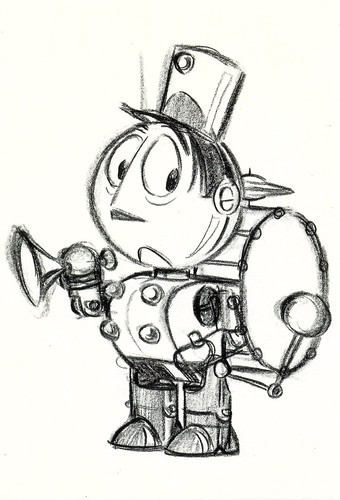
American postcard by Disney Enterprises / Pixar Animation Studios, 2005. Image: Pixar Animation Studios. Concept art by Jeff Pidgeon for Toy Story (John Lasseter, 1995). From 'The Art of Pixar: 100 Collectible Postcards, published by Chronicle Books.
The not always smoothly-running cooperation with Disney
In 1991, Pixar made a deal with Disney for $26 million. Pixar would make three long feature films for Disney, entirely with computer animation. Disney would then release these films in the cinemas and would take care of the marketing around them. The profits would be shared 50-50. However, Disney would own all the rights to the films and the characters.
The first of these films was Toy Story (John Lasseter, 1995). The film was a great success, bringing in more than 350 million dollars worldwide. This established Pixar's name in the world of computer animation. Pixar's first five films brought in a total of 2.5 billion dollars and made Pixar one of the most successful film companies in the world.
The cooperation with Disney, however, did not always run smoothly. During the production of Toy Story 2 (John Lasseter, Ash Brannon, Lee Unkrich, 1999), disagreements arose because Pixar wanted this film to count as one of the three agreed-upon films, while Disney felt that this film was separate from the contract. In 2004, Disney and Pixar tried a new cooperation. This new deal was for distribution only, as Pixar wanted more say in the story and production of the films.
Pixar also wanted these new demands to apply to the films that were still in production at the time and were actually still covered by the old contract: The Incredibles (Brad Bird, 2004) and Cars (John Lasseter, Joe Ranft, 2006). Disney found these conditions unacceptable, and negotiations were difficult. Pixar even considered seeking a business partner other than Disney for its future films.
In September 2005, negotiations continued. By then, Pixar had already announced that, in any case, it would no longer release films in November, but around the summer. The premiere date of the film Cars was postponed to see how the negotiations would go, and it slowly became clear that instead of the film being released in November, it would be released in the summer.
When it slowly became clear that instead of continuing to work together, Disney wanted to acquire Pixar, a new distribution deal was made for the film Ratatouille (Brad Bird, Jan Pinkava, 2007). This was to ensure that, regardless of the outcome of the negotiations, this film would still be released through Disney. Ratatouille, however, would remain the property of Pixar.
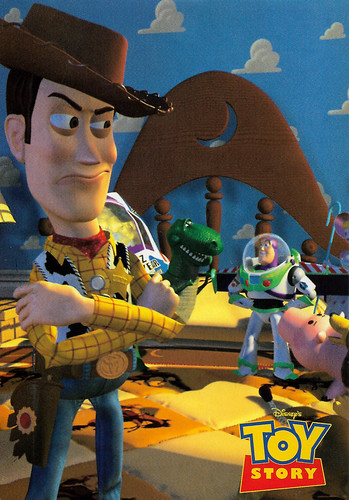
French postcard by Chromovogue, no. 7201-6. Image: Pixar / Disney / Hasbro. Film image of Toy Story (John Lasseter, 1995).
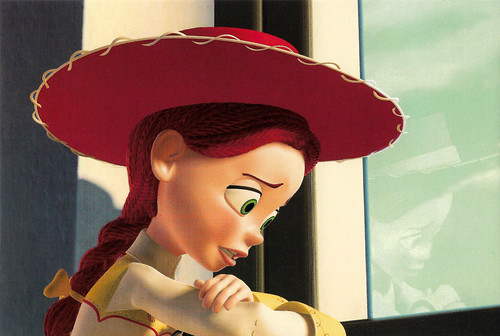
American postcard by Disney Enterprises / Pixar Animation Studios, 2005. Image: Pixar Animation Studios. Film image of Toy Story 2 (John Lasseter, Lee Unkrich, Ash Brannon, 1999). From 'The Art of Pixar: 100 Collectible Postcards, published by Chronicle Books.

American postcard by Disney Enterprises / Pixar Animation Studios, 2005. Image: Pixar Animation Studios. Film image of The Incredibles (Brad Bird, 2004). From 'The Art of Pixar: 100 Collectible Postcards, published by Chronicle Books.
A take-over by Disney but not a merger
On 24 January 2006, Disney announced that it had reached an agreement on the takeover of Pixar for the sum of 7.4 billion dollars. This was done in part through a share swap. With the deal, Steve Jobs, whose 50.6% stake in Pixar was converted into 7% of Disney's shares, became the largest (individual) shareholder in Disney. Steve Jobs was also added to Disney's Supervisory Board as a non-independent member.
The current president of Pixar, Ed Catmull, became president of both Pixar and Walt Disney Feature Animation, but Rich Ross (head of Walt Disney Studio Entertainment) retains the final say in all decisions. The acquisition did not mean that Pixar and Disney would merge. Pixar is still a separate department within Disney, so the Pixar name has been left intact, as has Pixar's human resource management.
Before Pixar started making full-length animations, they mainly made short films. They have continued to do so. These short films are still regularly shown as a prequel to feature films and are sometimes based on one of Pixar's full-length films.
Of the nineteen Pixar films released after the creation of the Best Animated Feature Oscar in 2002, fourteen were nominated for the award and eleven of them, Finding Nemo (Andrew Stanton, Lee Unkrich, 2003), The Incredibles (Brad Bird, 2004), Ratatouille (Brad Bird, Jan Pinkava, 2007), WALL-E (Andrew Stanton, 2008), Up (Pete Docter, 2009), Toy Story 3 (Lee Unkrich, 2010), Brave (Mark Andrews, 2012), Inside Out (Pete Docter, 2015), Coco (Lee Unkrich, 2017), Toy Story 4 (Josh Cooley, 2019) and Soul (Pete Docter, 2020) won.
To date, the animation studio has won nineteen Academy Awards, four Golden Globes, and three Grammy Awards, as well as numerous other awards. The studio works with PhotoRealistic RenderMan, its own version of the RenderMan rendering programming interface used to create high-quality images. Its production studios and headquarters are located at the Pixar Campus in Emeryville near San Francisco, California.

French postcard by Sonis, no. C. 941. Image: Disney / Pixar. Film image for A Bug's Life (John Lasseter, 1998). Sent by mail in 1999.

American postcard by Disney Enterprises / Pixar Animation Studios, 2005. Image: Pixar Animation Studios. Japanese poster for Monsters, Inc. (Pete Docter, David Silverman, Lee Unkrich, 2001). From 'The Art of Pixar: 100 Collectible Postcards, published by Chronicle Books.

French postcard by Sonis, no. C. 1413, offered by Teisseire. Image: Disney / Pixar. Film Image for Finding Nemo (Andrew Stanton, Lee Unkrich, 2003).
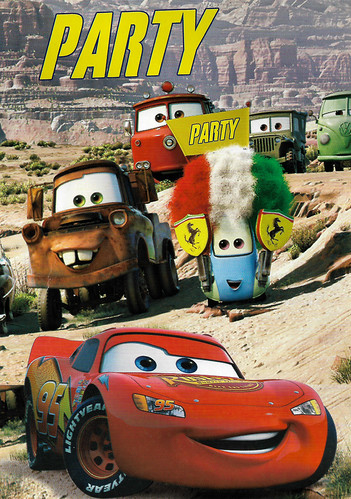
French postcard by Creativ World, Ref. 071743. Image: Disney / Pixar / Porsche. Film image of Cars (John Lasseter, Joe Ranft, 2006). Caption: Party!

French postcard by Sonis, no. C. 1790. Image: Disney / Pixar. Film Image for Ratatouille (Brad Bird, Jan Pinkava, 2007).
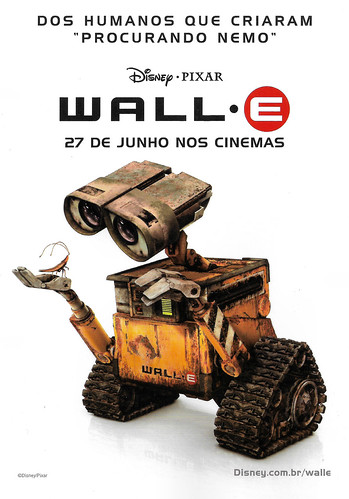
Brazilian postcard by Mica. Image: Disney / Pixar. Film image of WALL·E (Andrew Stanton, 2008).
Sources: Wikipedia (Dutch) and IMDb.
No comments:
Post a Comment